Trying to make a graph that looks like the first image here.
However when I try and implement it, I can't work out how to get the dates to print on the X axis, the scale seems about right, just the xticks seem not to be dates, but some basically random number. The typical output is visible in figure 2.
How can I get the dates to show on the xticks. I would like it to show every month, or quarter between 2019-12-01 and 2021-03-01 (march 1st).
Bonus points for any formatting that makes it look more like the first picture.
import matplotlib.pyplot as plt
import numpy as np
from datetime import datetime
event = np.array(['Groupone','Grouptwo','Group3','Group4','Group5','Group6'])
begin = np.array([datetime(year=2019,month=12,day=1),datetime(year=2020,month=2,day=1),datetime(year=2020,month=5,day=1),datetime(year=2020,month=11,day=1),datetime(year=2019,month=12,day=1),datetime(year=2020,month=5,day=1)])
end = np.array([datetime(year=2019,month=12,day=30),datetime(year=2021,month=2,day=1),datetime(year=2021,month=2,day=1),datetime(year=2021,month=2,day=1),datetime(year=2021,month=2,day=1),datetime(year=2020,month=7,day=3)])
beg_sort = np.sort(begin)
end_sort = end[np.argsort(begin)]
evt_sort = event[np.argsort(begin)]
plt.barh(range(len(beg_sort)), end_sort-beg_sort, left=beg_sort, align='center')
plt.yticks(range(len(beg_sort)), evt_sort)
plt.yticks(range(len(beg_sort)), evt_sort)
plt.show()(begin)
end_sort = end[np.argsort(begin)]
evt_sort = event[np.argsort(begin)]
plt.barh(range(len(beg_sort)), end_sort-beg_sort, left=beg_sort, align='center')
plt.yticks(range(len(beg_sort)), evt_sort)
plt.show()


